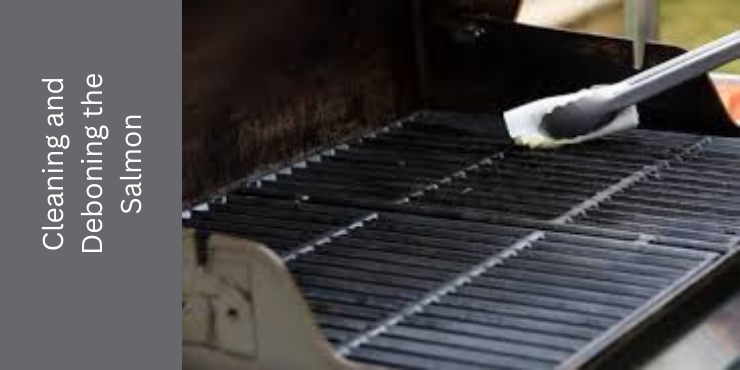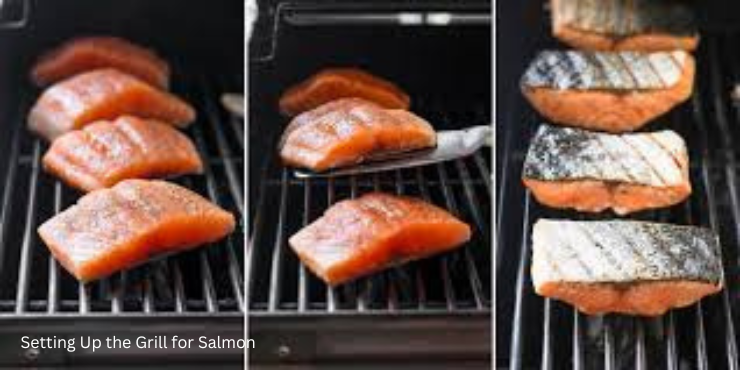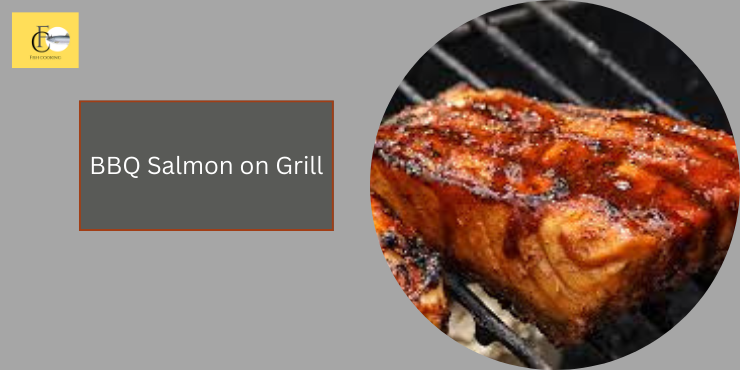Introduction
BBQ Salmon on Grill is one of those culinary experiences that can transform a simple dinner into a gourmet feast. Whether you’re a seasoned griller or a newbie in the BBQ world, mastering the art of grilling salmon can elevate your summer cookouts. Not only is BBQ salmon delicious, but it’s also packed with nutrients that are beneficial for your health. So, let’s dive into the world of BBQ salmon and uncover the secrets to grilling the perfect fish!
Choosing the Right Salmon
First things first, selecting the right type of salmon is crucial. There are several varieties of salmon, but the most common ones you’ll find are Atlantic, King, Sockeye, and Coho. Each has its own unique flavor and texture.
- Atlantic Salmon: Known for its mild flavor and fatty texture, it’s a popular choice for grilling.
- King Salmon: Also known as Chinook, it’s the fattiest and most flavorful, perfect for a luxurious BBQ experience.
- Sockeye Salmon: With its deep red flesh and robust flavor, it’s a favorite among those who love a more intense salmon taste.
- Coho Salmon: It offers a milder flavor and is often more affordable, making it great for family meals.
Prepping the BBQ Salmon on Grill
Once you’ve chosen your salmon, the next step is preparation. Whether you buy it fresh or frozen, make sure it’s cleaned and deboned. A few small bones might be left, so a quick check is always a good idea.
Cleaning and Deboning the Salmon

- Cleaning: Rinse the salmon under cold water and pat it dry with paper towels.
- Deboning: Use a pair of fish tweezers to remove any remaining bones.
Marinating Options
Marinating your salmon can add a burst of flavor. Here are some popular options:
- Lemon and Dill: A classic combination that’s fresh and vibrant.
- Soy and Ginger: Perfect for an Asian twist.
- Honey Mustard: Adds a sweet and tangy flavor that caramelizes beautifully on the grill.
Seasoning the Salmon
If you prefer to keep it simple, a good seasoning rub can do wonders. A mix of salt, pepper, garlic powder, and paprika can enhance the natural flavors of the salmon.
Essential Grilling Equipment
To grill salmon perfectly, having the right equipment is key.
Types of Grills
- Gas Grills: Convenient and easy to control.
- Charcoal Grills: Adds a smoky flavor that’s hard to beat.
- Electric Grills: Great for indoor grilling.
Grill Accessories
- Grill Basket: Prevents the fish from sticking to the grates.
- Fish Spatula: Designed to flip delicate fish fillets easily.
- Thermometer: Ensures your salmon is cooked to perfection.
Preparing the Grill
Before you start grilling, your grill needs to be prepped properly.
Cleaning the Grill
A clean grill ensures that your salmon doesn’t stick and gets those beautiful grill marks.
- Preheat the grill on high for 10-15 minutes.
- Use a grill brush to clean the grates thoroughly.
Setting Up the Grill for Salmon

- Gas Grills: Preheat to medium-high heat.
- Charcoal Grills: Arrange the coals for direct and indirect cooking.
- Electric Grills: Set to the appropriate temperature according to the manufacturer’s instructions.
Temperature Control
Maintaining the right temperature is crucial for grilling salmon. Aim for a grill temperature of around 375-400°F (190-205°C).
Grilling Techniques
The technique you use can make or break your BBQ salmon.
Direct vs. Indirect Grilling
- Direct Grilling: Best for thinner fillets.
- Indirect Grilling: Ideal for thicker cuts to ensure even cooking.
Using Wood Chips for Flavor
For an added smoky flavor, try using wood chips like cedar, apple, or hickory. Soak them in water for about 30 minutes before adding them to the grill.
Avoiding Common Grilling Mistakes
- Not preheating the grill: This can cause sticking.
- Overturning: Only flip the salmon once to avoid breaking it.
- Not monitoring the temperature: Use a thermometer to check doneness.
Cooking Times and Temperatures
The thickness of your salmon will determine the cooking time.
- Thin Fillets (1/2 inch): Grill for 6-8 minutes.
- Thick Fillets (1 inch): Grill for 10-15 minutes.
How to Check for Doneness
The salmon should be opaque and flake easily with a fork. A thermometer should read 145°F (63°C) in the thickest part.
Flavor Enhancements
Enhancing the flavor of your salmon can take it to the next level.
BBQ Sauces
- Classic BBQ: Sweet and smoky.
- Teriyaki: Adds an umami punch.
- Citrus Glaze: Light and refreshing.
Herbs and Spices
Experiment with fresh herbs like dill, parsley, and cilantro, or spices like cumin, coriander, and smoked paprika.
Citrus and Other Accompaniments
Lemon wedges, lime zest, or even a squeeze of orange can brighten up the flavors.
Side Dishes to Complement BBQ Salmon
Pair your salmon with delicious sides to create a well-rounded meal.
Grilled Vegetables
Asparagus, bell peppers, and zucchini are excellent choices.
Salads
A fresh green salad or a tangy coleslaw can add a nice crunch.
Rice and Grains
Quinoa, brown rice, or a wild rice blend can soak up the flavors beautifully.
Presentation Tips
How you present your BBQ salmon can make a big difference.
Plating the Salmon
Serve the salmon fillets on a large platter or individual plates.
Garnishing Ideas
Garnish with fresh herbs, a sprinkle of sea salt, or a drizzle of olive oil.
Health Benefits of Salmon
Salmon is not just tasty; it’s incredibly nutritious.
Nutritional Value
Rich in protein, vitamins, and minerals, salmon is a powerhouse of nutrients.
Omega-3 Fatty Acids
These healthy fats are great for heart health and brain function.
Common Mistakes to Avoid
Avoid these pitfalls to ensure your salmon turns out perfect every time.
Overcooking
Salmon can dry out quickly, so keep an eye on the time and temperature.
Undersalting
Season generously to bring out the best in the fish.
Ignoring the Skin
Grilling with the skin on can help keep the salmon moist and flavorful.
Grilling Safety Tips
Safety should always be a priority when grilling.
Fire Safety
Keep a spray bottle of water handy to manage flare-ups.
Handling Raw Fish
Use separate utensils and plates for raw and cooked salmon to avoid cross-contamination.
Cleaning Up After Grilling
Proper cleanup ensures your grill stays in good condition.
Properly Cleaning the Grill
Once the grill has cooled, use a brush to remove any residue.
Storing Leftover Salmon
Store leftovers in an airtight container in the fridge for up to three days.
Conclusion
Grilling salmon is a delightful way to enjoy this flavorful and nutritious fish. From choosing the right type of salmon to mastering the grilling techniques, you’re now equipped with everything you need to impress your family and friends at your next BBQ. So fire up that grill and enjoy some delicious BBQ salmon!
FAQs
How do you keep salmon from sticking to the grill? Brush the grill grates with oil and make sure the grill is preheated to prevent sticking.
What’s the best way to season salmon for grilling? A simple mix of salt, pepper, garlic powder, and paprika works wonders, but feel free to get creative with marinades and rubs.
Can you grill salmon with the skin on? Yes, grilling with the skin on helps to keep the salmon moist and adds extra flavor.
How long should you marinate salmon before grilling? Marinate for at least 30 minutes, but no longer than an hour to avoid the fish becoming too soft.
What’s the best temperature for grilling salmon? Aim for a grill temperature of 375-400°F (190-205°C) for optimal results.

